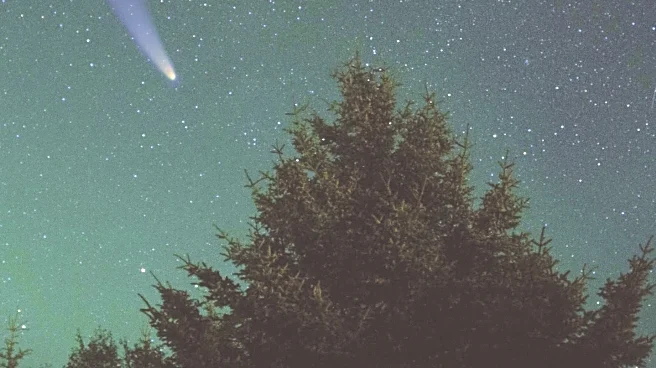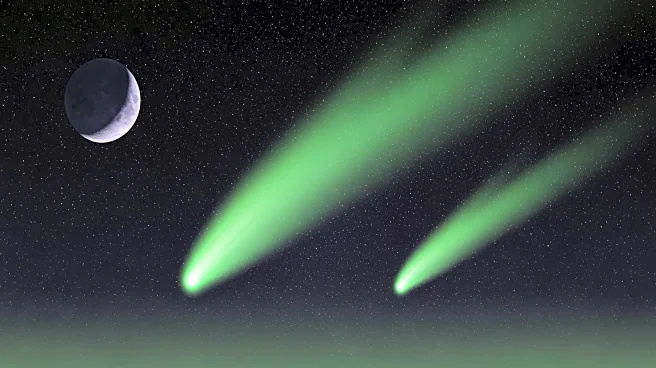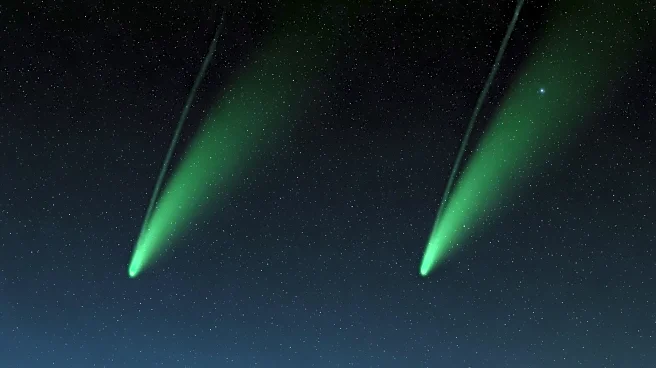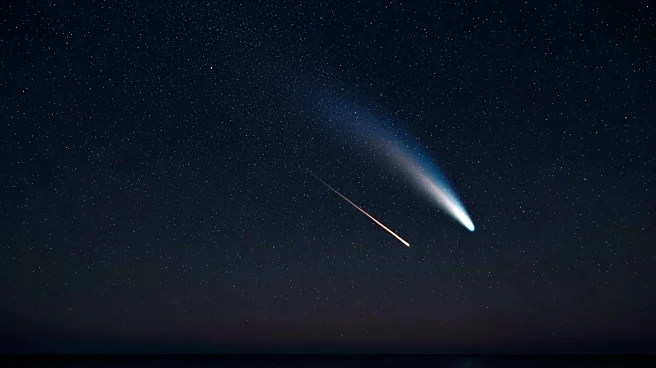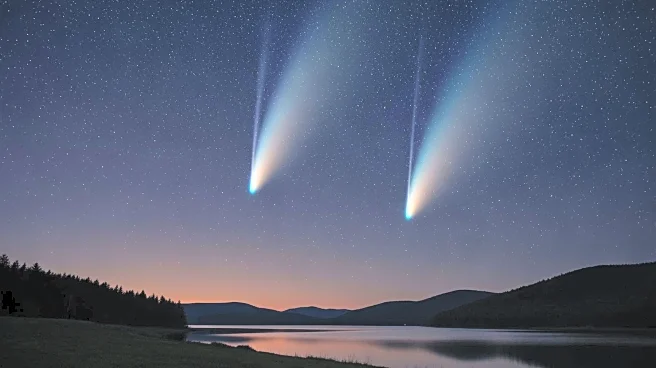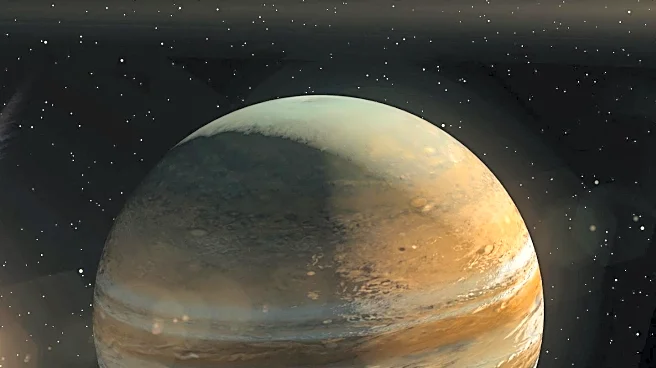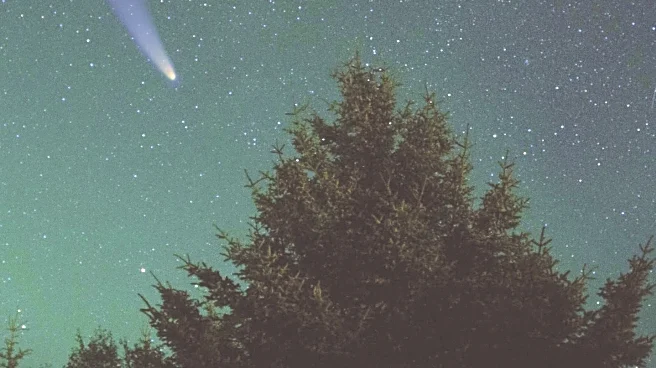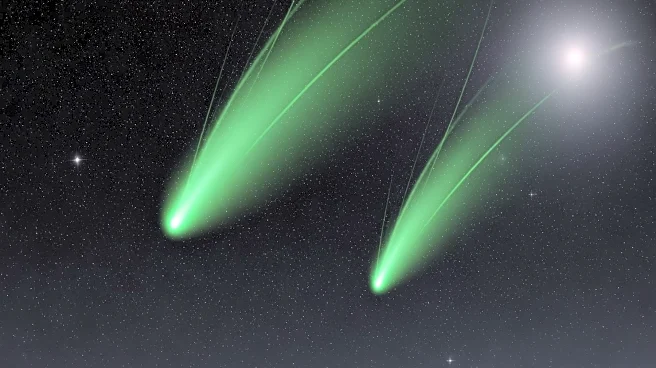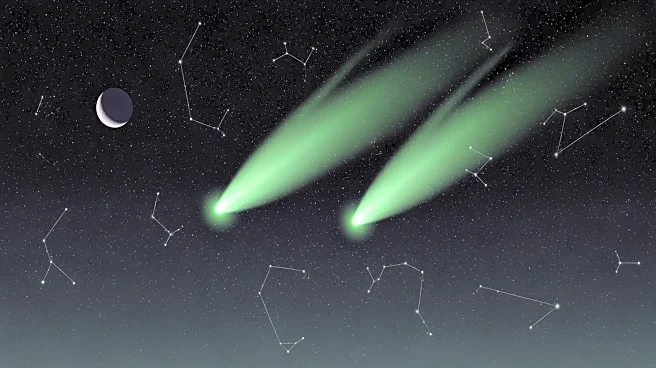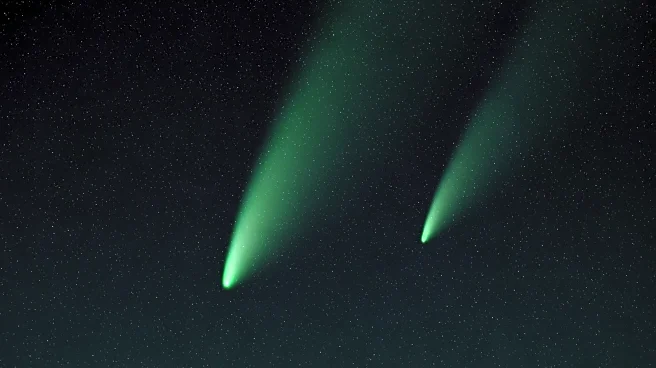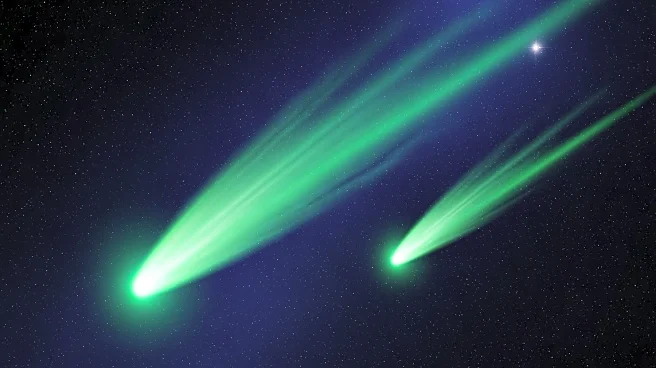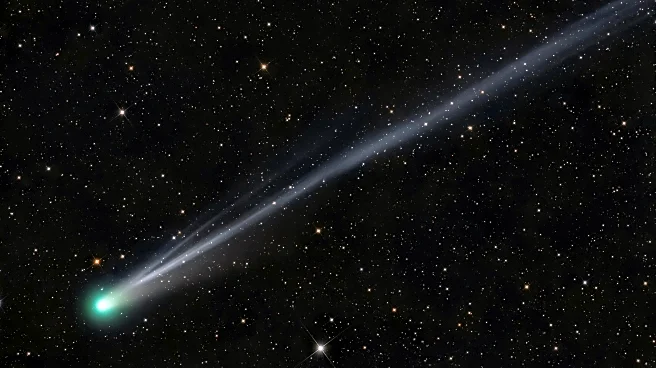What's Happening?
In October, skywatchers in the Northern Hemisphere will have the opportunity to observe two comets, C/2025 R2 (SWAN) and C/2025 A6 (Lemmon), as they become visible in the night sky. This rare astronomical event is notable because it is uncommon to see
more than one comet in a single month. Comet SWAN is expected to reach an estimated magnitude of +6.1, making it just beyond the limit of visibility to the naked eye under dark skies. It will be best viewed around October 20, particularly in moonless conditions. The comet will traverse several constellations, including Libra and Scorpius. Meanwhile, Comet Lemmon is anticipated to reach a magnitude of +5, making it a strong object for binocular viewing. It will be visible in the evening skies from mid-October through November, with its brightness potentially increasing as it approaches its closest point to Earth.
Why It's Important?
The visibility of Comets SWAN and Lemmon presents a unique opportunity for both amateur and professional astronomers to observe and study these celestial bodies. Such events can enhance public interest in astronomy and provide educational opportunities for schools and science enthusiasts. The appearance of these comets also contributes to our understanding of the solar system's dynamics and the behavior of comets as they travel through space. For the scientific community, these observations can yield valuable data on the composition and trajectory of comets, which can inform future research and exploration missions.
What's Next?
Following the appearance of Comets SWAN and Lemmon, several more comets are expected to pass near Earth in late 2025 and early 2026. This continued activity will likely sustain interest in astronomical observations and may lead to further public engagement events and educational programs. Observatories and space agencies may also plan additional studies to capture data on these upcoming comets, contributing to the broader field of cometary science.
Beyond the Headlines
The increased visibility of comets in 2025 could spark discussions about the potential for future space missions aimed at studying these celestial objects up close. Such missions could provide insights into the early solar system and the origins of water and organic compounds on Earth. Additionally, the cultural and historical significance of comets, often seen as omens or harbingers in various traditions, may be explored in media and educational content, enriching public understanding of their role in human history.
